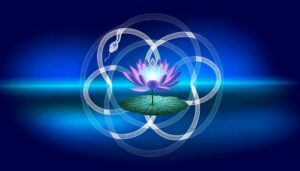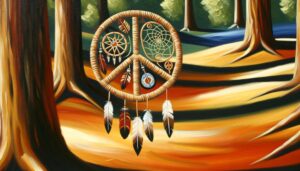Crafting the Perfect Mother-Son Symbol: A Guide
Symbols for the mother-son relationship span mythologies, art, and cultures. In Egyptian mythology, Isis and Horus embody maternal devotion, while Hinduism reveres Parvati and Ganesha.
Renaissance art often explores this bond through the Madonna and Child, emphasizing spiritual and emotional facets. Cultural traditions, like Japan's Hahakodomo Day, and the matrilineal system of Ghana's Akan people, highlight societal roles.
Tattoos and jewelry, such as Polynesian lineage tattoos and Indian protective amulets, offer contemporary expressions. Nature, too, provides symbols like the lioness and cub, illustrating strength and protection.
These varied symbols reveal deeper insights into the universal mother-son bond.
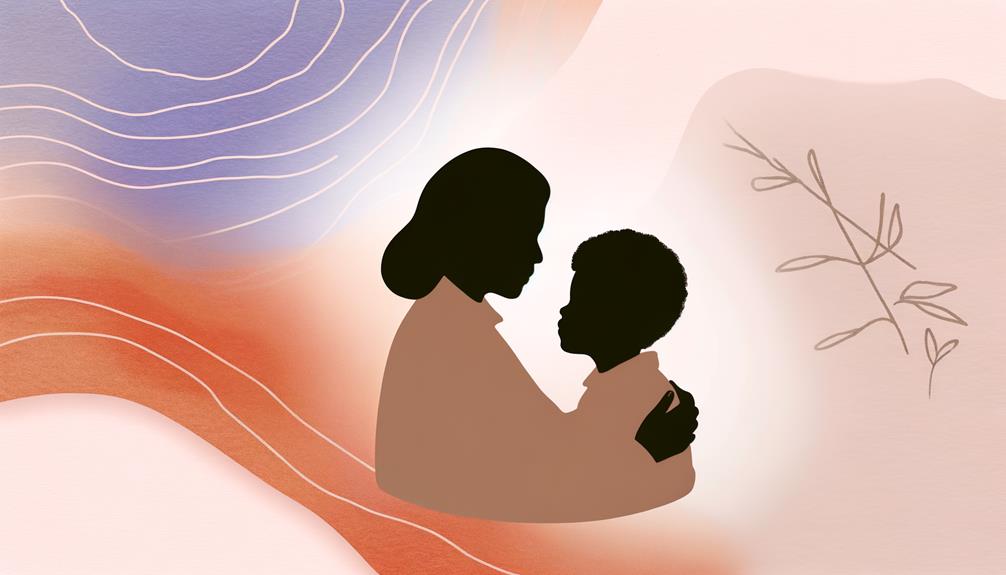
Key Takeaways
- Madonna and Child: Represents spiritual and human aspects of motherhood in Christianity.
- Isis and Horus: Symbolize maternal protection and devotion in Egyptian mythology.
- Lioness and Cub: Reflects maternal strength and protection in nature.
- Polynesian Tattoos: Depict lineage and heritage, emphasizing the mother-son bond.
- Oak Tree and Acorn: Symbolize growth, stability, and wisdom transfer between mother and son.
Mythological Symbols
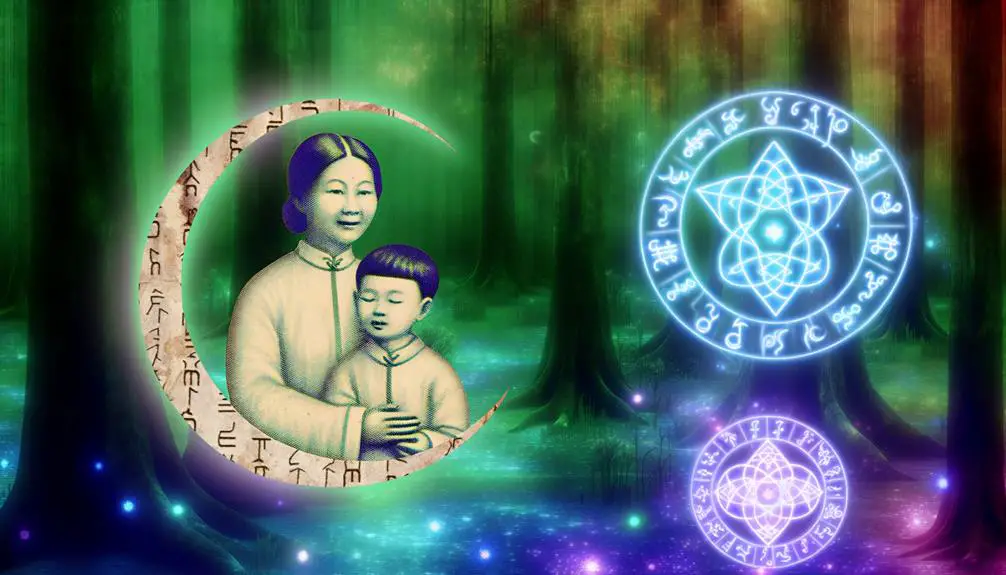
Throughout various mythologies, symbols representing the bond between mother and son often serve as profound metaphors for the dynamics of creation, protection, and legacy within a cultural context.
In Egyptian mythology, the goddess Isis and her son Horus epitomize this relationship, with Isis's role as protector and nurturer symbolizing the foundational maternal archetype.
Similarly, in Hinduism, the goddess Parvati and her son Ganesha embody the unity of divine motherhood and wisdom. These symbols are not merely familial; they reflect broader societal values and cosmological principles.
Ethnographic studies reveal that such mythological representations often mirror the societal roles of motherhood and sonship, illustrating a universal reverence for these bonds while highlighting cultural-specific nuances in their interpretation.
Artistic Representations
Building upon the mythological symbols that underscore the bond between mother and son, artistic representations across various cultures capture these relationships through diverse mediums and stylistic approaches.
In ancient Egyptian art, the depiction of Isis nursing Horus exemplifies maternal devotion and protection. Similarly, Renaissance paintings frequently portray the Madonna and Child, emphasizing both spiritual and human facets of motherhood.
In Eastern traditions, Indian sculptures of Yashoda with Krishna highlight nurturing aspects, often infused with dynamic motion and intricate detailing. These artistic endeavors not only preserve cultural narratives but also offer ethnographic insights into how societies valorize maternal bonds.
Each piece, whether a statue, painting, or textile, serves as a cultural artifact that transcends time, reflecting universal themes of care and connection.
Religious Icons
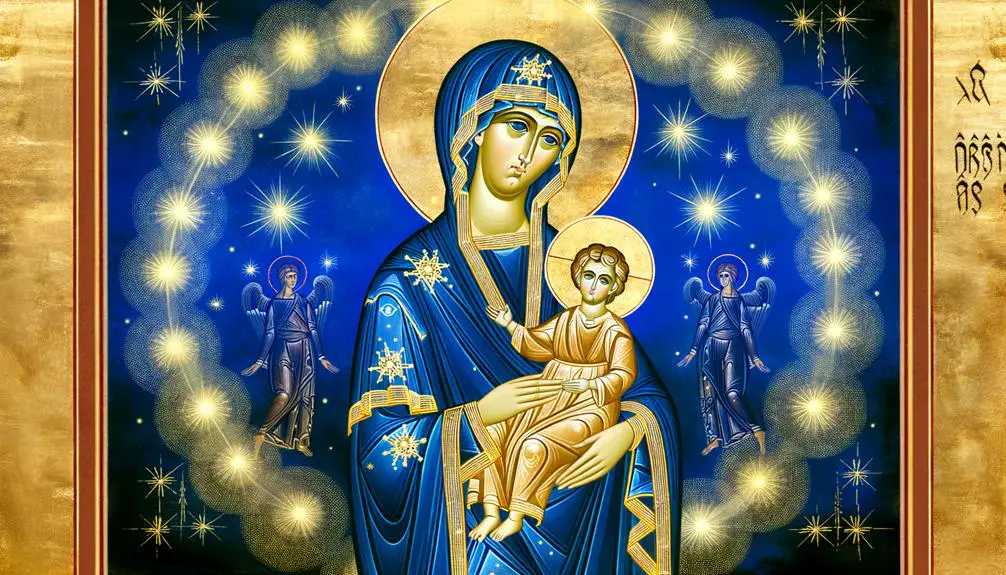
Religious icons, often serving as powerful symbols of devotion and reverence, encapsulate the profound spiritual significance attributed to the mother-son relationship across diverse faith traditions. These icons are not mere artistic endeavors but embody deep theological and emotional connections that resonate universally.
| Faith Tradition | Icon Example |
|---|---|
| Christianity | Madonna and Child |
| Buddhism | Hariti and her sons |
| Hinduism | Yashoda and Krishna |
| Islam | Maryam and Isa |
In Christianity, the Madonna and Child symbolize purity and maternal love. Buddhism's Hariti represents protection and nurturing. Hinduism venerates Yashoda and Krishna as embodiments of divine play and affection. Islam's Maryam and Isa signify piety and divine favor. Each icon reflects unique cultural and spiritual narratives, underscoring the mother-son archetype's universal reverence.
Cultural Traditions
Cultural traditions, often deeply embedded in the social fabric of communities, provide rich ethnographic insights into how the mother-son relationship is celebrated and honored across various societies.
In Japan, the annual festival of Hahakodomo Day emphasizes the nurturing role of mothers and the reverence sons show through ceremonial gifts and shared meals.
Among the Akan people of Ghana, the matrilineal kinship system places mothers at the core of social structure, with sons inheriting social status and property through their maternal lineage.
In Mexican culture, the celebration of Día de las Madres involves elaborate festivities where sons play a pivotal role in honoring their mothers with serenades and gifts.
These traditions underscore the universal yet culturally specific expressions of maternal bonds.
Literary Depictions
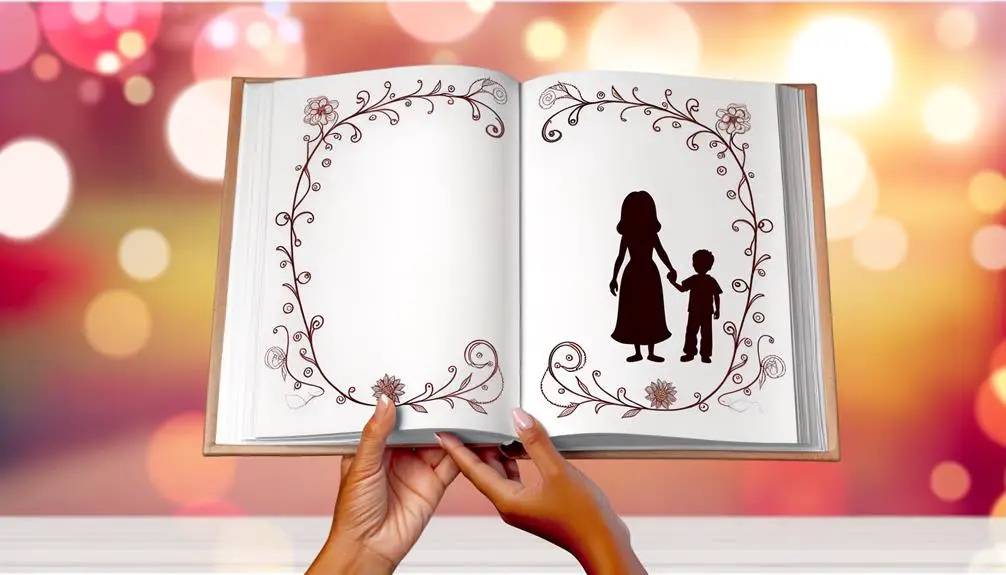
Literary depictions of mother-son relationships often explore complex emotional landscapes, revealing the depth and nuance of maternal bonds. Iconic duos such as Gertrude and Hamlet in Shakespeare's 'Hamlet,' or Sethe and her son in Toni Morrison's 'Beloved,' serve as profound illustrations of these dynamics.
These narratives not only enrich our understanding of familial connections but also offer insights into the broader cultural and societal implications of motherhood and sonship.
Maternal Bonds in Literature
Examining the portrayal of maternal bonds in literature reveals a rich tapestry of relationships that reflect and challenge societal norms and expectations. Authors frequently explore the complexities of these bonds, presenting mothers who are nurturing, protective, and, at times, suffocating.
These relationships often serve as a microcosm for broader cultural and social dynamics, encapsulating themes of sacrifice, authority, and rebellion. Ethnographic details, such as the portrayal of motherhood in different cultural contexts, underscore the universal yet variegated nature of maternal bonds.
Literary works like 'Beloved' by Toni Morrison and 'Room' by Emma Donoghue use the mother-son relationship to explore themes of trauma, identity, and resilience, providing a nuanced understanding of the intricate emotional landscape inherent in these connections.
Iconic Mother-Son Duos
In literature, iconic mother-son duos often serve as powerful conduits for exploring complex emotional and societal dynamics, offering rich insights into the human condition.
For instance, the relationship between Gertrude and Hamlet in Shakespeare's 'Hamlet' reveals the psychological strains and moral ambiguities within familial bonds.
Similarly, Sethe and her son, Beloved, in Toni Morrison's eponymous novel, navigate the harrowing legacy of slavery, embodying resilience and trauma.
These narratives, steeped in ethnographic detail, explore the intricacies of maternal influence and filial duty.
Through such depictions, literature transcends mere storytelling, functioning as a mirror to reflect and critique cultural norms and individual psyches, underscoring the indelible impact of the mother-son relationship on personal identity and societal structure.
Modern Interpretations
Modern interpretations of the mother and son symbol have evolved greatly, reflecting contemporary artistic symbols that emphasize fluidity and multifaceted relationships.
Cultural representation shifts, influenced by globalization and technological advancements, highlight a move towards more inclusive and diverse portrayals.
These changes underscore a broader societal trend towards recognizing the complexity and individuality of familial bonds in today's world.
Contemporary Artistic Symbols
Amidst the evolving landscape of contemporary art, modern interpretations of the mother and son symbol often reflect deeper societal shifts and personal narratives, revealing complex layers of cultural and emotional significance.
Artists employ a variety of mediums, from digital art to mixed media, to explore themes of identity, belonging, and the nuanced dynamics within familial relationships. These works frequently incorporate ethnographic elements, thereby contextualizing individual experiences within broader social frameworks.
The symbolic representations are not confined to traditional depictions but rather push boundaries to include abstract forms, emphasizing emotional connections over literal imagery. This modern artistic approach allows for a more inclusive and multifaceted understanding of motherhood and sonship, resonating with diverse audiences seeking depth and authenticity in art.
Cultural Representation Shifts
Building upon the contemporary artistic symbols, the broader cultural representation shifts of the mother and son relationship reflect a profound recontextualization of familial roles within modern society. These shifts reveal an evolving dynamic where traditional perceptions of motherhood and sonship are increasingly influenced by gender fluidity, changing family structures, and socio-economic factors.
Ethnographic studies highlight the rise of nurturing masculinity, where sons actively participate in caregiving roles, challenging patriarchal norms. Concurrently, mothers are depicted not solely as nurturers but as multifaceted individuals balancing career and family life. This nuanced portrayal underscores a symbiotic relationship, fostering mutual growth and emotional resilience.
Therefore, modern interpretations signal an inclusive and dynamic reimagination of mother-son bonds, resonating with contemporary societal values.
Tattoos and Jewelry
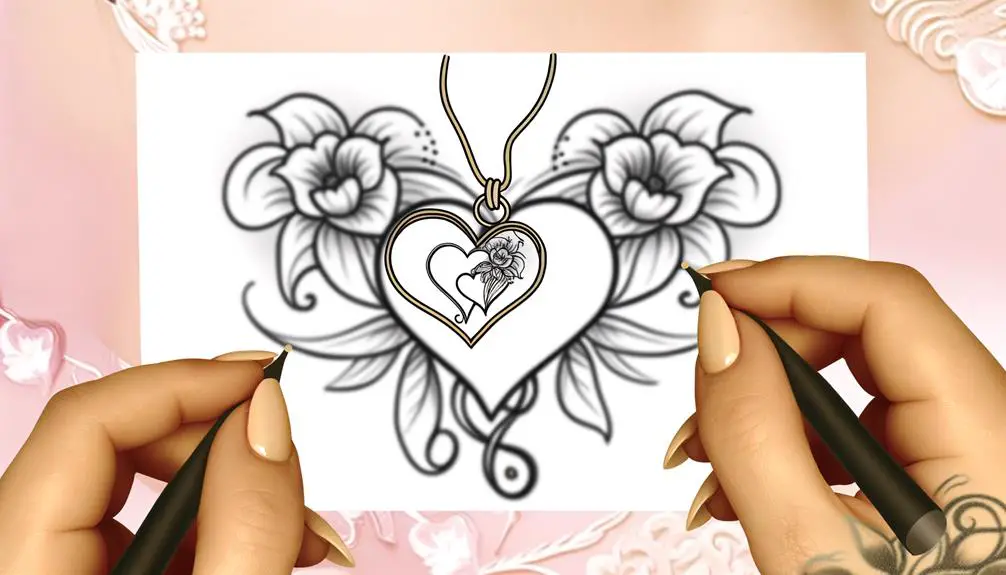
Tattoos and jewelry offer tactile and visual representations of the profound bond between mother and son, often deeply rooted in cultural traditions and personal narratives. Ethnographic studies reveal differing societal approaches to these symbols. For instance, Polynesian tattoos serve not only as art but also as markers of lineage and heritage. Meanwhile, in Western cultures, mother-son tattoos might depict shared life events or mutual values. Jewelry, on the other hand, such as matching pendants or engraved bracelets, frequently symbolizes everlasting love and connection.
| Culture | Common Symbolism |
|---|---|
| Polynesian | Heritage and lineage markers |
| Western | Shared life events, mutual values |
| Indian | Protective amulets |
| African | Tribal affiliation |
| Japanese | Ancestral honor |
Understanding these cultural nuances enriches our appreciation of the symbolic interplay in mother-son relationships.
Symbolism in Nature
While cultural artifacts like tattoos and jewelry offer tangible symbols of the mother-son connection, nature provides its own rich tapestry of motifs that reflect this profound bond across different societies.
In many cultures, the lioness and her cub serve as potent symbols of maternal strength and protection, embodying the fierce loyalty and nurturing spirit inherent in motherhood.
Similarly, the nurturing relationship between the oak tree and its acorn is emblematic of growth, stability, and the generational transfer of wisdom.
Ethnographic studies further reveal that indigenous communities often view the moon and its phases as a representation of the eternal cycle of life, mirroring the nurturing and guiding role of a mother in her son's journey.
This natural symbolism enriches the understanding of maternal bonds.
Conclusion
In the labyrinth of symbols representing the mother-son relationship, the interplay between mythological archetypes, artistic renderings, religious icons, and cultural traditions reveals a rich tapestry of interconnected meanings.
Such symbols, whether etched in literature or embodied in modern tattoos and jewelry, underscore the universal yet complex nature of this bond.
Ironically, amidst the vast array of interpretations, humanity's quest for a definitive symbol remains as elusive as ever, reflecting an enduring fascination with the ineffable essence of maternal love.

